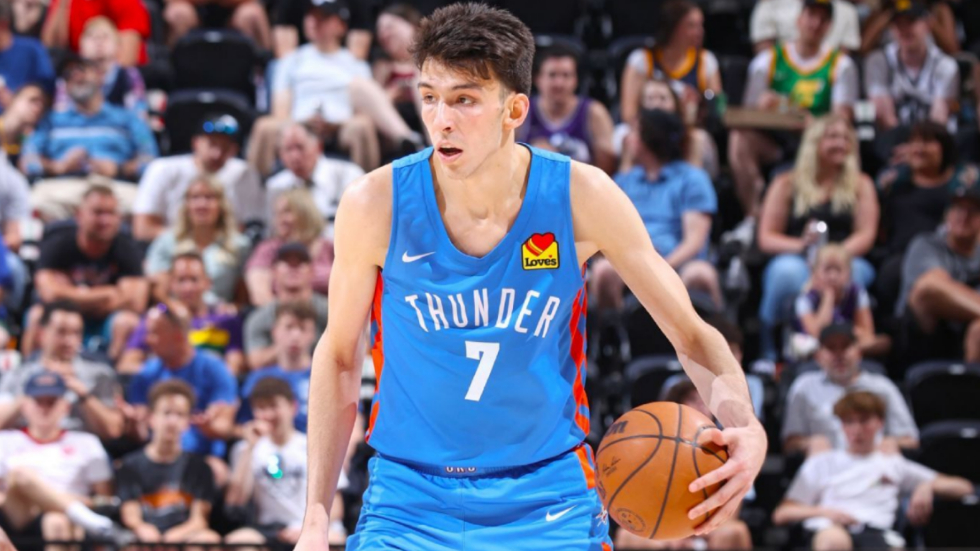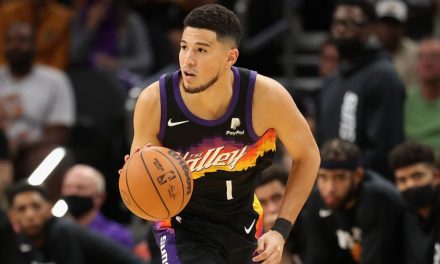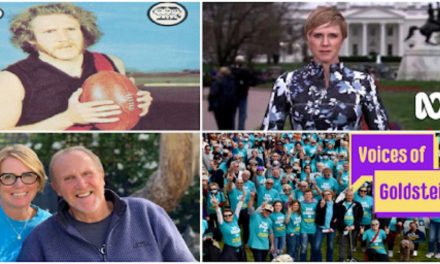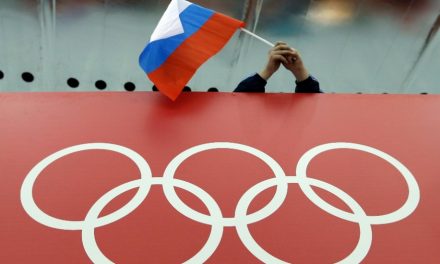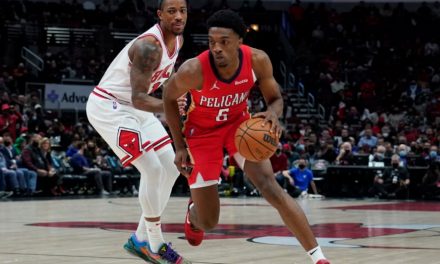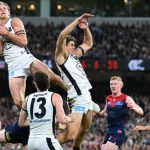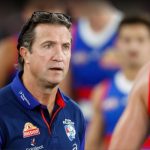Unfortunately for Oklahoma City, the rookie campaign of their prized recruit Chet Holmgren has ended before it began due to a serious foot injury. Photo: Getty Images.
It’s been a tumultuous off-season in the NBA, but now it’s pretty much set in stone, bar a few moves on the periphery of rosters.
We’ve already examined the Atlantic Division, so today we’re headed west to take a look at the Northwest Division.
Denver Nuggets: A
Even without a single off-season move, the Nuggets were going to be a better team in the upcoming season, simply through the return of Jamal Murray and Michael Porter Jr from long-term injury.
The moves they did make only cemented an excellent off-season in the Mile High City.
In swapping the ageing Will Barton for Kentavious Caldwell-Pope, Denver received a huge upgrade at shooting guard. The 29-year-old Caldwell-Pope, a former top-10 draft pick, is an excellent defender whose superior strength allows him to defend up the positional spectrum better than Barton ever could.
He’s also turned himself into a genuine marksman, shooting 38.5 per cent, 41 per cent and 39 per cent from beyond the arc in his past three seasons. ‘KCP’ isn’t the scorer or creator that Barton is, but with Porter and Murray back on board, he won’t have to be.
The KCP trade did mean that Denver had to give up Monte Morris, an excellent back-up point guard, for veteran Ish Smith (now playing for a record 13th NBA franchise) which is a clear downgrade and should see the Nuggets put a large amount of faith in Nah’Shon ‘Bones’ Hyland.
Hyland impressed as a rookie and is a similar type of player to Murray so he will act as insurance against further injury as well as providing continuity from the second unit.
Denver also brought in veteran big man DeAndre Jordan, though his days as a productive NBA centre are long past. Expect third-year big Zeke Nnaji to take a step up as Nikola Jokic’s primary back-up.
Draft-wise, the Nuggets picked up a pair on interesting wings in Christian Braun and Peyton Watson, as well as project big man Ismael Kamagate, but none of them will likely crack the rotation on a regular basis this season.
Minnesota Timberwolves: B-
Well, then!
Never let it be said that Tim Connolly doesn’t mind taking a gamble. The new Wolves head decision maker – a disciple of Masai Ujiri – wasted little time checking his cards before going all in for his new team.
If coach Chris Finch can find a way to make his weird frontcourt of the all-offence Karl-Anthony Towns and the all-defence Rudy Gobert work, then the Wolves will be one of the most improved teams in the NBA in 2023.
Gobert will cover for all of Towns’ defensive deficiencies whilst providing a vertical spacing that nobody else on the Wolves can and Towns’ shooting will space the floor in a more traditional sense.
Gobert should also mesh well with perimeter scorers Anthony Edwards and D’Angelo Russell in much the same way he did with Donovan Mitchell and Mike Conley in Utah.
Of course, Gobert is also a 30-year-old who is highly reliant on his athleticism and has plenty of miles on the clock. If he doesn’t click in his new environment, that $40 million-plus salary of his is going to start looking awfully expensive.
Given the Wolves gave up a pair of starters, a key reserve, their past two first-round draft picks and just about every other pick they had available, the downside to this trade is very real.
In short, Minnesota is learning to swim by burning its boats.
The Gobert trade aside, the Wolves brought in Kyle Anderson, a good player whose fit looks awkward on a team with two All-NBA level centres and a series of castoffs in Austin Rivers, Eric Paschall, Bryn Forbes and CJ Elleby.
This could all go right for the Wolves, but it could also go very, very wrong.
PLEASE HELP US CONTINUE TO THRIVE BY BECOMING AN OFFICIAL FOOTYOLOGY PATRON. JUST CLICK THIS LINK.
Oklahoma City Thunder: B+
The Thunder will feel disappointed with their off-season given a foot injury has ended the rookie campaign of prized recruit Chet Holmgren before it had even started.
Sometimes, things like this are just straight out unlucky. Where Holmgren – and his peculiar body type – is concerned, the worry is that it’s a sign of things to come.
This writer loves Holmgren’s skillset but simply can’t shake the feeling that the beanpole is going to have a career arc similar to Yao Ming, another unusually skilled big man whose body simply wasn’t equipped to handle the rigours of professional basketball.
Yao was rarely healthy after his 25th birthday, was effectively washed at 28 and retired at 30. The Thunder will hope for more, but they must be privately fretting.
That said, the Thunder probably didn’t have a choice at pick two. The only other genuine franchise-level talent in this draft went at pick one so they simply had to roll the dice and hope that modern sports science can keep Chet on the floor.
With their other picks, the Thunder took an all-or-nothing flyer in Ousmane Dieng, who could be a ‘Giannis Lite’ type or be back in the NBL in five years, and Jalen Williams who looks a 10-year pro in the making. As for Jaylin Williams? Not so much. Though, as a second-round gamble, he’s fine.
The Thunder also extended Lu Dort (five years, $87.5 million) and Kenrich Williams (four, $27 million) in deals that should look great as the new salary cap numbers come into effect.
Overall, OKC added more intriguing talent around their star back court of Shai Gilgeous-Alexander and Josh Giddey. Holmgren’s absence will hurt in the immediate future, though it probably gives the Thunder another crack at a top-four pick before they start to focus on building an actual team that wins actual games of basketball.
Portland Trailblazers: B+
The Blazers are not going to contend for the NBA title. That much remains clear. But, whilst Damian Lillard remains in Oregon, the team is almost obliged to maximise what they have. This grade is awarded with that goal in mind.
In trading away Lillard’s long-time running mate CJ McCollum there was, for a fleeting moment, the possibility of a Blazers teardown. Instead, Lillard extended his deal for two more years, McCollum’s heir in Anfernee Simons inked a four-year deal at $25 million per season – a contract that may look cheap by the time it ends – and veteran centre Jusuf Nurkic returned on a $70 million deal over four years (his contract may not age so gracefully).
Portland also traded for Jerami Grant, who provides the perfect two-way complement to its high-scoring-but-defensively-challenged backcourt, while Gary Payton II was signed from the Warriors as a defensive alternative to Lillard and Simons.
Portland also picked this draft class’s mystery man in Shaedon Sharpe, nominally out of Kentucky. The Canadian looks like he was built in a basketball lab – at 6’6” with a strong, muscular frame for a 19 year old, he’s an incredible leaper and a dead-eye jump shooter. He’s fast north-south, but does struggle with his overall agility.
The range of outcomes for Sharpe is vast. He could become a more athletic Brandon Roy, or he could be this generation’s Harold Miner. The median outcome might be a JR Smith type.
The Blazers had a down year last season and while they’ll undoubtedly be a better basketball team, in a Western Conference that is rebounding around them, will that be enough to earn them a playoff berth?
Utah Jazz: A
Now THAT’S how you do a teardown!
In his first season in full control of the Jazz front office, Danny Ainge didn’t disappoint. He moved franchise cornerstones Rudy Gobert and Donovan Mitchell for … big breath … seven veterans, a pair of 2022 first-round draftees, seven unprotected first-round picks, a top-five protected pick and a pair of pick swaps.
Of those players brought in, Patrick Beverley has already been moved on for more young talent with Malik Beasley, Lauri Markkanen and perhaps Jarred Vanderbilt expected to experience a similar fate. That’s before we even consider that the Jazz’s other holdover veterans – Bojan Bogdanovic, Mike Conley and Jordan Clarkson – are also being shopped.
Moving those other veterans is imperative.
The Jazz, as currently constructed, are too good to drop into the absolute depths of the NBA standings because there is just too much competency and, frankly, depth on the roster.
Whilst Ainge will likely want to hold out for best value, the ridiculous packages he received for his former stars means that he doesn’t have to. He has just about all the picks that he can handle.
Given the picks he’ll receive for his vets are likely to be later in the first round, or perhaps the second, it’s more important that Ainge doesn’t lose sight of the forest for the trees and makes sure that the Jazz truly suck in 2023.
If Utah continues to shed its veteran core and secures top-four draft odds, then this mark could become an A+. If the Jazz hold onto their remaining experienced talent and win 30-odd games, then this mark has to come down a touch.
To find more of Jarrod Prosser’s content visit vendettasportsmedia.com

